Lisa Niver's Blog: We Said Go Travel, page 399
April 11, 2014
Gurudongmar, India:A tale of handcuffed heartbeats!
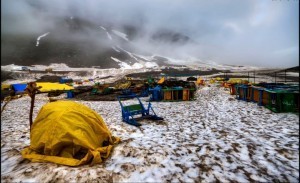 My car was whirling on the curvy, rocky highway of NH-31A, the sole connector of Sikkim to the Indian territory. It was a 12 hour ride and as for me, you could connect me to a barrel of scopolamine (drug for motion sickness) but still my vomitus would flow more heavily than rain pouring down from the palm of Indra, the rain God himself. I was on my way to Gurudongmar (Sikkim) for my 15 day’s Medical Aid Program (15th-31st December, 2011) and the series of infinite mountains in front of my eyes gave a slight ache to my heart. I was not a traveler then, not a traveler, not a nature lover, but a competitive book worm (I’m a medical student, I guess that says all). I had googled about Sikkim, a small state, rested in the lap of the Great Himalayas. The summary of the place was cold, wet and cloudy, so the vision I had in my head was that of “Forks” from the movie “Twilight” and I was sure not the kind of person who fancied meeting a vampire.
My car was whirling on the curvy, rocky highway of NH-31A, the sole connector of Sikkim to the Indian territory. It was a 12 hour ride and as for me, you could connect me to a barrel of scopolamine (drug for motion sickness) but still my vomitus would flow more heavily than rain pouring down from the palm of Indra, the rain God himself. I was on my way to Gurudongmar (Sikkim) for my 15 day’s Medical Aid Program (15th-31st December, 2011) and the series of infinite mountains in front of my eyes gave a slight ache to my heart. I was not a traveler then, not a traveler, not a nature lover, but a competitive book worm (I’m a medical student, I guess that says all). I had googled about Sikkim, a small state, rested in the lap of the Great Himalayas. The summary of the place was cold, wet and cloudy, so the vision I had in my head was that of “Forks” from the movie “Twilight” and I was sure not the kind of person who fancied meeting a vampire.
But there are certain experiences in your life that change your belief, your thinking, your vision, your soul, that change you. The trip to Sikkim was one for me.
We had halted at five spots till Chungthang and then we drove North-West to Lachen and finally via Thampu we reached Gurudongmar, one of the highest lakes in the world at an altitude of 17,000 ft. It seemed like the remotest area on planet Earth- no electricity, no network coverage and forget technology, no people even (I mean a population of 500, in a 100 km radius is like a drop in the ocean, for a country that had just celebrated its billionth birth). As the Sun was setting fast, I hurried with the routine check-up of my six valuable patients, but the real fact was I was as hungry as a pig and I didn’t want the symphony of my stomach’s hunger to be heard out loud. It was definitely possible; the place was so silent that I could practically hear my heartbeat without a stethoscope. But soon dinner was served around a bonfire where we sat with the 22 Sikh Regiment and heard the stories of the great battles and wars they had fought, as we savored hot noodles and momos, the army cook had prepared. The war stories were definitely terrifying, but the story about Gurudongmar and its creation was all fascinating. It was believed that the Sikh Guru, Guru Nanak, had visited the place on his journey to China and Tibet and had dug the lake all by his walking stick (hence the name) for the settlers then. They said his stick was still there in the form of a tree, guarding its water. After everyone slipped to their tents, I went to the lake. It seemed not real, but a beautiful dream, an imagination, that had sprung out of my head, glittering like Kohinoor under the moonlight. It was for the first time in my life that my mind was at peace, not planning any new venture, not planning any surgical degree, not planning any future at all. It had never occurred to me before that all my life I had been nothing but a robot, a robot that was biologically active but not alive. I had blamed the Sun of rising early on the dawn of my examination day; I had blamed the clock of ticking fast while I could not complete my paper; I had blamed time, for not giving me extra seconds, to accommodate my love of “poetry-writing”, in the hectic schedule of my medical profession. But that moment changed it all. The stagnant water and the stillness of the mountains seemed to have handcuffed time in fetters of pure beauty and knowledge. The holy place, its sacred water and the Guru himself seemed to enlighten me with a message, clear and loud.
We always have enough seconds..but we choose to be biologically active rather than truly living; we work for “future perfect” while we make our “present tense”; we choose being a “puppet”, a “slave” of time, rather than becoming its master.
I went ahead and read the Prakrit inscription on the cliff, the message from the Guru himself~
”In the end, what is time for an individual, just the number of heartbeats he or she gets.”
I was stunned, melted in deep thoughts; I was no more the “living-dead” and it was indeed ironical that the flow of my life was inspired by the stillness of the great Himalayas and the stagnant water of the Gurudongmar lake.
————-
About the Author: I’m Taruni Pandey, a 3rd year student of “Bachelor Of Medicine and Surgery”, Manipal Medical College.
I’m a trained vocalist, artist and a freelance writer. Poetry is my life and my passion!
Thank you for reading and commenting. Please enter our next Travel Writing competition and tell your story.
The post Gurudongmar, India:A tale of handcuffed heartbeats! appeared first on We Said Go Travel.
A Step Out of Time in New Orleans
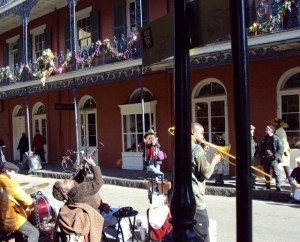 The further south one travels in the US, the less relevant and more fluid time becomes, as though the Mason-Dixon Line were some boundary not of cartography, but relativistic physics. Reasonable standards of time are casually tossed out the window like so much warmed sweet tea; phrases like “a little while” encompass not minutes, but hours.
The further south one travels in the US, the less relevant and more fluid time becomes, as though the Mason-Dixon Line were some boundary not of cartography, but relativistic physics. Reasonable standards of time are casually tossed out the window like so much warmed sweet tea; phrases like “a little while” encompass not minutes, but hours.
There is no finer example than in New Orleans, where natives and travellers alike are swept up in its lazy flow like flotsam in the Mississippi. It’s a city of contradictions. Corruption and kindness operate on epic scales; proudly American, and yet feels as though it was swiped from France, or perhaps some island in the Caribbean. An old place, full of history at every turn, that pays time itself little heed.
I was raised on the east coast, where time is a commodity to be traded, invested in, even hoarded; if something can’t happen now, you’re not trying hard enough. It’s a way of living that can be exhausting, though many of those afflicted don’t realise the toll time has taken on them. Enter New Orleans. You want that now? Ah, just relax. Have a seat—want a beer? Now suddenly stretches on forever, becomes two days ago. Things happen in New Orleans when they’re meant to, never you mind. Time takes care of itself without any help from you, so why not sit back and enjoy life?
With time kindly removed from the equation, I’m free to enjoy life moment to moment. It can be something small, like the way a thread of Spanish moss plays in the breeze as it hangs from the venerable boughs of a live oak, the morning light dancing across the Mississippi’s rippling brown flow like a flotilla of golden coins, the rich, delicately chocolatey smoothness of a cup of cafe au lait. Or something big: the purple, green and golden pageantry of Rex Krewe as it drifts imperially down St. Charles, the wild cacophony of Jazz Fest echoing across the French Quarter, or the thrill of a spontaneous parade to celebrate a football team that finally caught its break. Whatever it is that catches the eye and imagination in this place, chances are it wasn’t what you’d intended. The fact that you’re in New Orleans, well, that makes it okay.
That’s not to say the Crescent City exists in a state of complete temporal anarchy. No, there are plenty of ways to tell time, arguably more apposite than the Gregorian calendar or solar day. Looking at it from the most basic perspective, time is divided in terms of safety: there is hurricane season, from late spring through early fall, and there is the rest of the year.
A year is planned out not through arbitrary months, but by festivals. Mardi Gras kicks off the year during several weeks in early spring, followed by French Quarter Fest and Jazz Fest. The Food and Wine Experience heralds the start of summer, while Voodoo Festival marks its end. Po’ Boy Festival in late November reminds you to pack on those extra pounds before the cold winds blow in from the north.
But perhaps the most pleasurable way to tick off the passage of time here is via the stomach. A chicory coffee and beignet start the day, whether enjoyed at a plastic table among the tourist crowds of Cafe du Monde or at a coffee stand in quiet, picturesque City Park. Read a book or take a walk until your stomach tells you it’s time for lunch, then indulge in a po’ boy, thick-piled reuben, watercress salad or slice of the best pizza outside New York. Whatever your choice, wash it down with a hometown Abita beer—you don’t have anywhere to be! Perhaps one beer leads to another, but you frankly haven’t noticed because you’ve been drawn into the most fascinating conversation with a convivial neighbor. Beers turn into aperitifs, an absinthe frappe or hurricane; your stomach is growling once more, and it’s on to dinner. And while time isn’t strict in New Orleans, dress codes most certainly are. If you’re in the mood to don tie and tails, you’ll be treated like Rex himself at Commander’s Palace, dining on foie gras and turtle soup. A more casual diner will still eat like a king, whether it be corn bread, greens and macaroni, oysters on the half shell, or a big old muffuletta. You’ll save room for bread pudding, of course, and finish off your meal with a Sazerac nightcap—a Toddy, if it’s winter.
New Orleans recognizes that life, not time, is precious, and that a moment savored is one to be cherished, and is impossible to waste.
About the Author: Emma Clark has been writing and traveling for most of her life, but only recently thought to combine the two. She studied Japanese at University of Texas, and works as a class facilitator. She lives in south Minneapolis with her husband and a small menagerie of pets.
Thank you for reading and commenting. Please enter our next Travel Writing competition and tell your story.
The post A Step Out of Time in New Orleans appeared first on We Said Go Travel.
Holidays in Maldives luxury style

Deserted Maldive Island. Image courtesy of Google Images
With their signature white-sand beach and nearly deserted islands, the Maldives should be on the bucket list of any traveler. Each year, upwards of 800,000 tourists flock to the island nation, which is actually made up of more than 1,000 islands and atolls. One of the biggest tourist draws is the fact that only a few of these islands are inhabited. With a
maximum altitude of only 10 feet, the islands are the flattest country in the world and since they are located in the middle of the ocean, the island chain is one of the most susceptible places to be affected by rising sea levels. Now, more than ever is a great time to visit the country and experience one of the many attractions here. Some of the more popular activities includes exploring uninhabited islands, scuba diving with Hammerhead Sharks and snorkelling off the coast.
The Maldives have only been open to tourism since the 1970’s and because of their remoteness, tourism has not affected the local population very much. These two facts mean that visitors to the Maldives can expect a truly authentic experience. Holidays in Maldives luxury resorts are one of the most popular ways of visiting the islands. On top of this, the government has made sure to protect the island chain. This means that The Maldives has incredibly beautiful tropical scenery; graceful coconut palms lean over crystal-clear lagoons, coral reefs promise great snorkeling and scuba diving, as well as lots of sunshine.
The Maldives has one of the least exploited marine environments in the world and as such has gained a reputation as being one of the best diving destinations in the world. Snorkeling and scuba diving in the reefs around the North Male Atoll are second to none in the Maldives. Close encounters to Hammerhead Sharks are the highlight of any snorkeling or scuba trip, as they are one of the most respected predators in the wild and one of the most bizarre looking as well. The warm tropical waters provide the perfect habitat for these truly majestic fish. Stingrays and multi-colored corals and their fish are a common sight as well and can be found in abundance anywhere on the North Male Atoll.
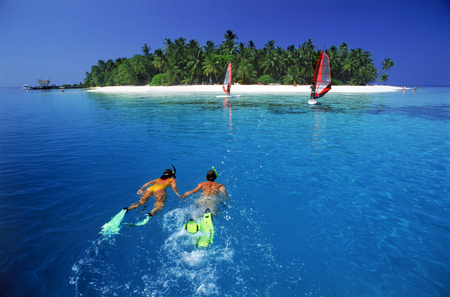
Snorkeling in the Maldives. Image courtesy of Google Images.
The surrounding areas around the atoll are the occasional ship wreck, where many species like to call their home as the ships offer refuge and can act as an artificial coral reef.
If snorkeling or scuba diving does not sound appeasing, perhaps visiting one of the hundreds of uninhabited islands would sound like a better option. With over 1,000 uninhabited islands in the Maldives, this is one of the most popular day trips as it is a truly one of a kind experience. No city traffic noise, pollution or people around means a truly relaxing experience that can be duplicated nowhere else in the world.
Visiting these islands should be at the top of the list of any traveler as their beauty and uniqueness cannot be compared to anywhere else in the world. With the world changing quickly and modernizing, sometimes taking a step back and relaxing is exactly what you need. From snorkelling or scuba diving with Hammerhead Sharks to visiting uninhabited islands, The Maldives are a place that should be visited at least once in a lifetime, if not more.
The post Holidays in Maldives luxury style appeared first on We Said Go Travel.
Honored to share in Vietnam
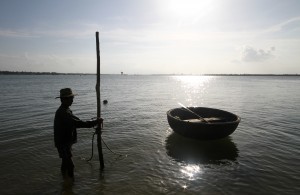 Prolonged exposure to the frenzied pace of Southeast Asia’s mega-metropolitan areas is perhaps best remedied by a detour to Hoi An in central Vietnam. In addition to the beautiful Cua Dai Beach showcasing views of the Cham Islands, the former port trading center offers a picturesque and historic, UNESCO-designated downtown featuring centuries-old Vietnamese homes, museums and even a 16th century Japanese Covered Bridge. The sagging wood homes, several of which are still occupied by descendants of the original occupants, provide an intriguing look into traditional Vietnamese architecture and culture.
Prolonged exposure to the frenzied pace of Southeast Asia’s mega-metropolitan areas is perhaps best remedied by a detour to Hoi An in central Vietnam. In addition to the beautiful Cua Dai Beach showcasing views of the Cham Islands, the former port trading center offers a picturesque and historic, UNESCO-designated downtown featuring centuries-old Vietnamese homes, museums and even a 16th century Japanese Covered Bridge. The sagging wood homes, several of which are still occupied by descendants of the original occupants, provide an intriguing look into traditional Vietnamese architecture and culture.
A destination’s most memorable charms, however, can reveal themselves through unexpected detours, as I discovered one afternoon during a quest to photograph the abundant rice paddy fields on the edge of town.
From the soggy fields, I steered my rented one-speed bicycle to Cua Dai Beach and then, on an impulse, turned right, pedaling about 4 km to the lighthouse and boat docks. Aside from the occasional boat tour, there is very little in this area of town to attract the average tourist, so non-natives are scarce. This was the “authentic” Vietnam I so desperately wanted to photograph.
I positioned myself on the edge of a dock and spent the following hour photographing the fishermen as they leaped from brightly colored bows onto the concrete to file paperwork. Seemingly amused by my presence, the fishermen smiled and waved at me. Some asked where I was from, giving me thumbs up when I felt brave enough to utter, “America.”
Despite the friendly nature of the fishermen, I could sense the port official was growing tired of the distraction. I decided it was time to inspect the adjacent jetty and so pushed the bicycle onto the sandy spit of land leading in that direction. There I encountered an elderly, bare-chested French tourist who admired my camera gear and informed me that if I followed the water line, I would soon come across some cast-net fishermen who might let me photograph them as they hauled in their catch.
Sure enough, I found a waterside lean-to and its occupants: a stick-thin, glassy-eyed fisherman, his smiling wife and their grown son. None of the three spoke a word of English, but they welcomed me into their home, showing me the exposed, straw platform where they slept and the scale they used to weigh their catch. From somewhere unseen, the woman produced unopened packages of cookies and sesame sticks and offered me some. I deduced the store-bought snacks were a special luxury and felt honored to share them.
By writing in the sand, the fisherman indicated he was 65 years old and his wife 62. I traced a “30” in the sand and pointed at myself. Then, because I suddenly felt awkward and didn’t know what else I could easily communicate, I turned the LCD screen of my camera in their direction and scrolled through the pictures I had taken of the fishermen at the dock.
The woman grew excited when I pointed to an image of an odd, bowl-shaped dinghy. She motioned for me to follow her out onto the beach to the base of a giant, handmade reel. She pointed up, instructing me to climb onto the raised platform behind it. We sat side-by-side, our legs dangling off the platform, and she demonstrated how to pull the spokes toward me and then shove them downward with my feet. Eventually, our efforts caused a massive net – large enough to easily wrap a Fiat — to surface just offshore. The work became more difficult, the sodden netting heavier and heavier with each rotation of the reel.
Halfway through our hauling, the woman scrambled down from the platform and motioned for my camera to take a picture. At first, I balked.
“This family has next to nothing,” I thought. “What if she runs off with my camera?”
But then I gave it to her. She snapped a few (surprisingly good!) shots of me in action and then passed the camera back with a smile. More trusting now, I left most of my photography gear on the beach with her as her husband rowed the two of us out to the net in his own woven bowl boat so we could collect the few wriggling fish suspended there. My gear was all there when I returned. Of course it was.
Back on shore, I thanked the trio for their time and generous hospitality by leaving a 100,000 VND bill, the equivalent of $5 USD. It didn’t amount to much, but the woman’s smile and glistening, grateful eyes said otherwise. I instantly wished I had offered more. I still do.
About the author: Megan V. Winslow is a writer and photographer who recently returned to the U.S. after a 6-month adventure around the world with her husband, Matt. Originally from Florida, Winslow relocated to San Francisco in January. She enjoys hiking, gardening and swing dancing.
Thank you for reading and commenting. Please enter our next Travel Writing competition and tell your story.
The post Honored to share in Vietnam appeared first on We Said Go Travel.
April 10, 2014
Elevation Gain in Peru
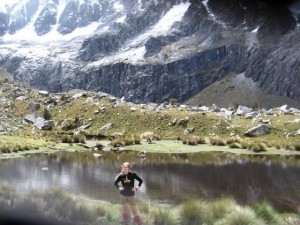 We needed two days to get to the peak. Three, if you counted travel. We spent the night in Huaraz, Peru, a small mountain town in the Andes, and before the sun rose the next day we were in a van built for eight but filled with twenty Peruvians. Our bags were strapped to the roof. Everyone’s bags were strapped to the roof. The van wound through the mountains, curving up switchbacks in the middle of the road until the driver heard a horn up ahead. He moved to the right and let the car coming towards us pass. The drive was sunny and as we climbed higher into the mountains, we shaded our eyes from the brilliant light reflecting off of snow covered passes. We passed Mount Paramount and the highest peak in Peru. We passed lagoons and rivers. We passed women on the side of the road selling food out of colorful scarves. The driver let myself and four other hikers off on the side of the road with a few houses and a restaurant to our right, and the trail to our left.
We needed two days to get to the peak. Three, if you counted travel. We spent the night in Huaraz, Peru, a small mountain town in the Andes, and before the sun rose the next day we were in a van built for eight but filled with twenty Peruvians. Our bags were strapped to the roof. Everyone’s bags were strapped to the roof. The van wound through the mountains, curving up switchbacks in the middle of the road until the driver heard a horn up ahead. He moved to the right and let the car coming towards us pass. The drive was sunny and as we climbed higher into the mountains, we shaded our eyes from the brilliant light reflecting off of snow covered passes. We passed Mount Paramount and the highest peak in Peru. We passed lagoons and rivers. We passed women on the side of the road selling food out of colorful scarves. The driver let myself and four other hikers off on the side of the road with a few houses and a restaurant to our right, and the trail to our left.
The first day was a short four hour hike. We were in a valley mostly full of cows and full of grass saturated with rainwater and moss, bordered by tall passes and rolling passes. We camped in a field spotted with cows and went to sleep wet from the rain, and woke up wet from the rain. We ate pre-cooked rice, onions, abused bread, and cream cheese before shouldering our trekking backpacks and getting back on the trail. They were heavier today, pulling our shoulders back and slowing us down, because they were filled with wet clothes and a wet tent. The second hike was eight hours. Our goal was to climb the highest peak on the trail, 4,750 meters, and make it to the valley by nightfall where we’d be warmer and drier.
It was cloudy and it rained and for a few collective minutes, we had sunshine. We stopped and ate lunch in the sun, and took most of what we had out of our bags to dry. Once we reached the base of the mountain, the weather changed and we climbed over rocks and up steep switchbacks in thick fog and rain. The higher we climbed, the colder and foggier it became. I fell behind while carefully stepping across the smooth and sharply inclined face of the mountain, spreading my arms like wings to my side for balance and shuffling my feet forward. There weren’t any trees to hold onto and if I had slipped, I would have fallen back onto the wet stone and slid until I hit a big enough rock.
I followed my companion’s voice up the mountain. Everywhere I looked was white. I could only see a foot in front of myself to the sporadic stone steps. I walked with my hands out to my side, holding the rock walls that rose on either side of me, climbing higher into the cloud line. I had my jacket and my thermal pants on, and a bandana over my ears, but I was cold. April in Peru but I was cold.
I climbed higher and the fog turned to rain, and the rain turned to snow. I followed my companion’s voice up until the stone steps ended and I found myself level. I could step forward or I could step back but I wouldn’t be climbing any higher. I could see six inches in front of myself and it was all white. I found my fellow hiker crouched under a ledge, shielding himself from the blowing snow. We sat for maybe two minutes, proud of ourselves for the long, steep climb up. We didn’t see much of the mountain from where we sat, just some rocks and the whiteness of elevation. We sat in the snow and enjoyed the height, enjoyed the feeling of being as high as we could go. We didn’t need the view; we could feel where we were and we could feel where we had been. We could guess where we were going next. We sat in the snow until we were cold enough and we turned back onto the trail and rushed down the mountain, quickly passing the lagoons and rivers that were promised to us as the rain collected and chased us down the trail, flooding where we had been and trying to flood where we were going. We were faster, though. We camped on dry land with a sunset and damp but not wet clothes.
Thank you for reading and commenting. Please enter our next Travel Writing competition and tell your story.
The post Elevation Gain in Peru appeared first on We Said Go Travel.
Arizona’s Desert
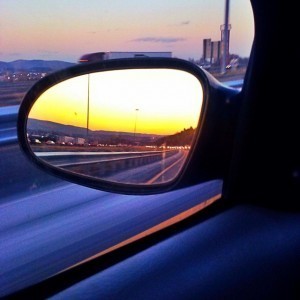 Arizona is a living, breathing place. She isn’t simply desert, spanning out over miles and miles. She is an oxymoron: the marriage of practicality and mysticism over a wasteland of scorched earth, seemingly barren yet teeming with life. The passing of the day is contingent on Arizona’s temperature and the vitality that she inspires. Your time is fluid, in sync with Arizona’s schedule. She guides the manner in which the day is spent, harmonious with the desert and the creatures that live there, with not an hour wasted.
Arizona is a living, breathing place. She isn’t simply desert, spanning out over miles and miles. She is an oxymoron: the marriage of practicality and mysticism over a wasteland of scorched earth, seemingly barren yet teeming with life. The passing of the day is contingent on Arizona’s temperature and the vitality that she inspires. Your time is fluid, in sync with Arizona’s schedule. She guides the manner in which the day is spent, harmonious with the desert and the creatures that live there, with not an hour wasted.
In the morning, the desert awakes renewed; the evening chill has cleared away yesterday’s grit and lethargy. She brings with her a sense of rejuvenation, the overnight meditation building this frenetic energy. Arizona mornings have promise. The birds of prey lift into the air, soar through the warming sky, following the sun. The morning drives people outdoors: joggers running along the pavement until it grows hot, owners walk overeager dogs sniffing out cottontail rabbits that bound unexpectedly through front yards, and kids ride bikes around and around cul-de-sacs until the heat drives them inside. Midmorning, the fervor of the day ignites passion to craft new and exciting things and reinvigorates creative work left dusty from the day before.
She languishes at midday, when the sun has reached its highest point. Even the grunting javelinas seek shelter, little rodents tunnel into their homes in the sand, and woodpeckers roost into their holes drilled in sides of towering cacti. Midday is a gift from the desert. There is this sense of monotony: time stretching before you, completely untarnished by the inexplicable urge to create. When the sun and the heat rule housework can be done, emails can be answered, work calls can be made. The indoors cage everyone indoors, forcing them to come to terms with mundane and practical tasks and providing the time to leisurely finish them. With the ending of the day, this mood is broken.
When the sun finally dips below the mountains, it’s almost as though everything breathes a sigh of relief. Everything is colored orange and red: arbitrary rock formations, the rolling hills dotted with cacti, and the canyons dropping into the earth. Rodents cautiously duck out of their holes, lizards scuttle around the rocks, and the coyotes awaken and stretch before their evening hunt. Finally, being outside is no longer a task. With the close of the day there accompanies this sense of things underneath the surface that you don’t understand. It could be the sudden respite from the sprawling static of midday. Or it could be the way the oncoming darkness shrouds the endless expanse of sand and rock. Or perhaps it could be the Native American culture that subtly touches almost everything. But this feeling evokes a strange joy and vigor. Over the dinner: strange but beautiful Navajo flute music playing softly over the table set with delicious food and drink. People gathered together, talking about meaningless things but still relishing each other’s company. The feeling of Arizona’s nighttime awakens this sense of camaraderie, gathering people together in the deepening of the evening to just be together. The night spurs the extra ordinary. Simple excursions across the cities or towns diverge into an adventure with the car windows down and the radio up high.
As the evening grows late, nocturnal predators begin their hunt. The coyotes call to each other, lovely but haunting. To go outside is to feel Arizona at her most raw. The time spent with Arizona at night is peculiar in how it inspires. It’s easy to lose sight of the danger of the desert in the sun: the vistas and stunning mountains in the distance distracting. At night, the full terror and mystique of the strange landscape is revealed. Everything is alit under the moon and marvelous stars, clear in the open sky. Scorpions creep through brush, dark shapes scuttle around on rough ground, and bats glide erratically through the night sky. Sometimes a light dewfall touches the mountains, pressing the sand and grit back into the earth. Everything is furtive movement until the desert awakens once again, rejuvenated.
About the Author: Beryl Shea is a senior at Mount Saint Mary’s University, graduating in May as a Communications major. Road trips are my favorite means of travel.From New Hampshire, living in Maryland, but my heart is in Oregon and Arizona.
Thank you for reading and commenting. Please enter our next Travel Writing competition and tell your story.
The post Arizona’s Desert appeared first on We Said Go Travel.
Missouri, Here I come!
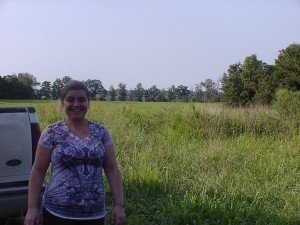 A desire of mine has been is to step out of the city onto a piece of land and self sufficiently. I have been making little steps towards this. Living in a city in Canada I recieved a call from my mom that she has purchased 12 acres in Missouri. That was the incentive I needed to pick up and live a new adventure. I gave my job at a coffee donut shop two weeks notice. There are two reasons for going to the land; first to gather with a group of like minded beings and a Native American Chief heard about what we wanted to do, his tribe has graciously adopted the small group of us in his tribe and we formed our own clan called the Turtle Clan.
A desire of mine has been is to step out of the city onto a piece of land and self sufficiently. I have been making little steps towards this. Living in a city in Canada I recieved a call from my mom that she has purchased 12 acres in Missouri. That was the incentive I needed to pick up and live a new adventure. I gave my job at a coffee donut shop two weeks notice. There are two reasons for going to the land; first to gather with a group of like minded beings and a Native American Chief heard about what we wanted to do, his tribe has graciously adopted the small group of us in his tribe and we formed our own clan called the Turtle Clan.
With all this in mind we have taken on a huge project here. The things we want to accoplish are growing our own food, off the grid energy, filtering our own water, and living our day to day lives on our terms. The reason why is the monotonous day to day life of working and having to rely on the city for power and water is a way of life we do not want to live anymore. Reasons for that is because we want to take self responsiblity. We also want to teach others who want to learn about this type of lifestyle as.
Mom bought our land sight unseen she was living in the guidence of the creator. Many were worried about her choice I believed in her. When we went to visit the land it looked exactly as it was presented. For those looking into buying land I will just say mom did look and make sure the company was reputable and did her homework please make sure you do your homework too if you are planning doing something like this because there are companies out there that are not reputable. The land was used for hay bailing so there was just the land. We drove up to our little gate with a microscopic size sign saying lot 1. We knew we had made a very good decision.
There was a mysterious hole dug at the entrance of the property with pieces of metal covering it; no one knew what that was. The grass and weeds were up to our knees in most places and then up to our thighs in other spots. As we were walking through the grass I discovered we have a butterfly patch along the east side of the property towards the woods; everywhere I walked there were purple and white butterflies flying all around me. We also saw beautiful spider webs on the ground between the grasses. When we proceeded into the wooded area which was covered in leaves since it was near the end of August. It felt like a soft floor better than any carpet of soft floor covering. There were many trees which seemed to be mostly healthy except for the walnut trees seemed to be unwell. The further in the trees we went a creek with a tier limestone waterfall. So beautiful to see and it is all ours.
I am also excited about being a part of a Native Tribe. This will help to learn about the culture and it is a great project to work together. The Chief has also expressed interest in purchasing his own land and doing a similar project and has asked us to help them and of we will. We would like to not only do this for ourselves, for others as well. With the way the cost of living is constantly going up and up we are looking for ways to help ourselves and others keep the costs down and to live better with the environment. There are lots of things we are doing that is harmful we saw that we can change.
This project has been in the works for a long time for those involved we have done things on our own and together collectively as a group. All we want to is a way to live in a way that is healing for the environment we are living in and it is healing also for the beings involved. There have many who have also been inspired to do their own projects and that is encouraged to all to do so. I have lived in Canada my whole life up to this point and I am having the best adventure of my life when I just pack my stuff and came over to the United States. I encourage everyone who has a dream or desire to do something like this to do it; I am having the time of my life.
Thank you for reading and commenting. Please enter our next Travel Writing competition and tell your story.
The post Missouri, Here I come! appeared first on We Said Go Travel.
Living on Ghana Time
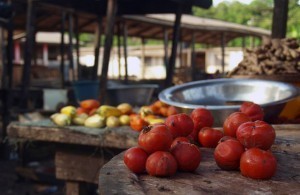 At first light, a flock of birds broadcast their sandpaper calls from the tops of two tall palm trees next to the house. Soon after, the neighbors begin sweeping the shared courtyard, the swish-swish of twig brooms insisting that we get up, too, and start the day in the relative cool of an African dawn. There will be no lie-in today: in the little village of Saltpond on the Ghanaian coast, I have no choice but to live on Ghana time.
At first light, a flock of birds broadcast their sandpaper calls from the tops of two tall palm trees next to the house. Soon after, the neighbors begin sweeping the shared courtyard, the swish-swish of twig brooms insisting that we get up, too, and start the day in the relative cool of an African dawn. There will be no lie-in today: in the little village of Saltpond on the Ghanaian coast, I have no choice but to live on Ghana time.
Fellow volunteers Jess and Juliette emerge from mosquito nets hung from the ceiling like spotlights. Rachel, co-founder of the UK-based charity Saltpond Education Project, is next to stir. The kids in the village used to have occasional lessons in the dust underneath a mango tree; now, they have classrooms, exercise books, and wear bright, yellow and green uniforms from the local seamstress. Now, they play in the shade of the mango tree at recess.
Gathered in the windowless kitchen to make tea on a portable gas stove, we eat crackers and small and sweet green bananas, and discuss the day’s tasks. ‘You can give us more to do than that,’ we assure Rachel, ‘we’re not here to be tourists!’ But Rachel is used to the languid rhythm of Ghanaian days and the brief to-do list remains as it is.
I spend the morning at the school, observing lessons and sorting though donated books. My entire afternoon is to be occupied with dinner: without a fridge, food must be bought fresh from the market each day. Mike, school principal by day and willing chef by night, hands me a scrap of paper: tomatoes, shrimp paste, palm oil, beans, plantain. Used to cooking for delicate western stomachs, Mike will make red-red stew, minus the usual lip-numbing chilies.
The walk to market is slow and hot. As a lone female abruni ¬– a sort-of affectionate term for a white person – I attract a fair bit of attention, including a tag-along group of kids chanting English stock phrases over and over:
‘Hello sir, how are you? I am fine, thaaaank yoooou!’
Those who speak a little more English stop to chat:
‘Where are you from? Why are you here? When is your birthday?’
In this part of Ghana, there are fourteen names: a male and female version for each day of the week. When I tell one woman that I was born on a Saturday, she reacts with a delighted, ‘Oh! I am also called “Amma!”’ as though it is a one-in-a-million coincidence. The child sleeping in a patterned sling on her back is called Amma, too.
At the market, skinny, scruffy dogs weave through the maze of stalls. Vast wooden platters of fat tomatoes and glassy-eyed fish attract clouds of flies; I attract more giggling children, calling, ‘abruni! abruni!’ as I work my way through the list, haggling gently over each item. Everyone takes their time; they have nowhere else to be and, actually, neither do I. It’s a rare and vaguely worrying thought; I always have somewhere to be.
The return journey is through air as hot and thick as soup: I have never sweated so much from moving so slowly. We help prepare dinner sitting in the concrete yard, where the day’s dust gathers ready to be swept up again in the morning, and the evening hours melt into a darkness still heavy with the heat of the absent sun. Later, back under the mosquito net, I try to remember the last time I went to bed at 8pm and think of all the things I would usually do in the evening. But this is Ghana, and on Ghana time, evenings are for dreaming.
About the author: Katherine Walker is originally from the UK, but moved to Cologne, Germany in 2013 after stints in Austria and Argentina. She is just starting out in the travel writing business whilst trying to master the German language in her spare time.
Thank you for reading and commenting. Please enter our next Travel Writing competition and tell your story.
The post Living on Ghana Time appeared first on We Said Go Travel.
April 9, 2014
A Dream Come True in Guyana
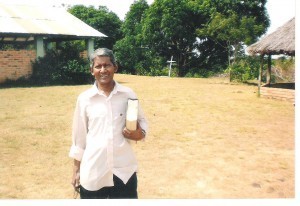 Guyana has had an inspiration for me ever since I came to know about it in 1959 as a teenager. It was then called British Guiana, a name which is regrettably used, even now, by many folks, educated but ignorant of the world-wide explosion of freedom from colonialism in the last sixty odd years.
Guyana has had an inspiration for me ever since I came to know about it in 1959 as a teenager. It was then called British Guiana, a name which is regrettably used, even now, by many folks, educated but ignorant of the world-wide explosion of freedom from colonialism in the last sixty odd years.
Missionaries were zealous travelers. It was a Scottish Jesuit missionary, Bishop Richard Lester Guilly, who spoke to us in our College in Kodaikanal, India, about the adventurous life of British missionaries in Guyana. It took me 50 long years to find my way to my dreamland of Guyana. That long wait itself was reason enough for me to enjoy my time there wisely enough.
Though obviously foreign, Guyana was very much like India especially because of its Indian descendants forming the largest ethnic group. If, therefore, I felt at home there, I also missed India far away. Thus living abroad among Indian-looking people proved to be a sort of healthy tension of broadening the horizon and also discovering the old, distant home in the new, and vice versa; it was a longing for homeland fulfilled but not abated and so kept alive for further enrichment even as I enjoyed exploring the new land. That experience was a sort of having the cake and eating it, now and then at least, if not always!
In India because of its enormity of population almost every face is unfamiliar, but in Guyana it is pleasantly opposite; because of its population numbering a little more than three quarters of a million, almost every face becomes familiar in the long run. So, in course of time, as I kept moving around and going to market or bank or hospital or beach or bus station or church, etc., I found myself on close terms with very many, and became almost all things to all people. Such pleasant fellowship and neighborhood proved to be for me a fertile breeding space for sharing and growing in wisdom.
Given the smallness of Guyana, extending 800 odd km N–S and 430 km E–W, people like me, without much money but desirous to travel, can manage to travel around the country and rejoice in the sheer pleasure of traveling. In doing so I am only inheriting the traits of the Guyanese made up of 6 peoples; for all of them—Africans, Amerindians, Chinese, East Indians, Europeans and Portuguese—had migrated from their country of birth. As their ancestors, recent or ancient, made their move, by choice or force of circumstances, to their undreamt-of land for better pastures so I now find myself providentially led, despite all human odds, to a prolonged tryst with a certain divine destiny.
And the destiny is of adventure of traveling by road or by water or by air (most of which being more bumpy than smooth) and reaching your destination of the rest house in a town such as Lethem (bordering Brazil) or the comfortable lodge in the Iwocrama rain forest or one of the 300 odd amazing waterfalls, only to be as pleased as Punch that you made it against all the odds, natural or human!
Along with such adventure goes the discovery of yourself thanks to people who make you feel welcome, and give you space to develop your interests, and encourage you to find fulfillment in living, and, at the same time, humbly open themselves to the good you can do to them, for example, in promoting their schooling or native crafts or new-found vocation. A dream of mine for the native Amerindians is to help them: 1) enjoy their natural resources that often go wasted, 2) prevent their environment from the encroaching dangers of the sick, modern society’s use of non-biodegradable plastic goods, and 3) cherish their natural paradise, shunning all foreign incursion that diminishes their pristine glory .
Such life in the hinterland of Guyana may be forbidding for those who are unwittingly seduced and encumbered by modern amenities available through electric power or gas. But with the old generation that lived by the rhythm of day and night, I have particularly learned to enjoy the dark, quiet nights made so beautiful by pearls of stars that you can never imagine in a city. It is a priceless experience, no less than an experience of God who saw all that God had made and found them very good!
When I share this lasting experience with my Guyanese friends, their envy takes a different twist. If they have been envious of my good fortune in having seen more of their country than they themselves, they begin to sense there is more to travel than they have been used to thinking!
About the author: With a Master’s degree in Mathematics (in Madras University, India) and later in Spirituality (in Holy Names College, Oakland, US) Paul Dominic has devoted himself mostly to directing interested folks spiritually and psychologically in personal conversations and also through writing in Indian and foreign journals, including American.
Thank you for reading and commenting. Please enter our next Travel Writing competition and tell your story.
The post A Dream Come True in Guyana appeared first on We Said Go Travel.
To Sway with the Island in Massachusetts
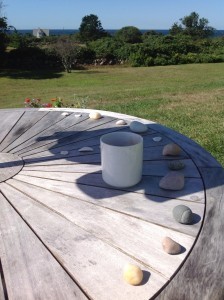 To Sway with the Island in Massachusetts
To Sway with the Island in Massachusetts
Up on Martha’s Vineyard I sleep with the windows open. It allows the tempo of time to continue like a cool jazz symphony with unexpected rhythms and riffs. The breezes play in the curtains, thunder arrives unexpectedly yet there’s always the ocean, always, in the distance, keeping pace with my breath. And every once in awhile the moon’s light fills the room.
It’s not my house, but it doesn’t matter. This island has never been about the you or the me or the ours or the theirs. I don’t own any part of it, but instead quite contently, together we form a perfect union. Like an old married couple we’ve taken advantage of a give and take relationship. I respect the low key volume necessary for it’s nature to exist, in return she let’s me do whatever I want to, whenever I want to.
For a few weeks every year I turn myself over to this house which sits by itself at the very tippy end of a narrow sandy road. Nothing much here but a sweet grass lawn tapering down to an oddly put together stone wall and then over the low scraggily scrub oaks the ocean. How lovely to arrive. I’m here, let’s open these windows.
There’s a small grey deck, the wood soft from the salt air. I can step out from the kitchen and don’t mind it’s size. All I need is room to let the hose splash off the sand brought up from the beach and enough space to place a chaise where it won’t sink in an ungainly manner on the grass. A round table with a lopsided faded umbrella takes up most of the area. It’s here on this deck I watch the sun slowly cross the sky hour by hour. And from my creaky lounge chair the stars begin to appear in the evening. There’s coffee in the morning, ice tea in the afternoon and maybe a vodka tonic in the evening. Whatever.
I have a history here, my childhood, a marriage, those I’ve loved now gone, others lost somewhere along the way. With a past comes memories. Though on this deck I choose to let the reflections come and go more like old friends I’m at ease with. In other places they seem to arrive with demands, emotions and needs for explanations. But for these few weeks I leave behind all the noise which accompanies my days during the year and in short time I adopt the easy sway of this island.
I read, I don’t read. I write and then I think about writing. There’s music from the house or sometimes simply in my head. I leave the outdoor shower reluctantly. I eat fresh clams sitting on the steps of the dock on Menemsha. How many shooting stars cross the sky at night and why can’t I wish on each one? I breathe.
Wasting my time? Oh, I don’t think so. Where else could I amble along the base of the red clay cliffs scanning the ocean for shark fins slicing the water, knowing I’ll probably never see one. Or walk the beach road every day and after years of doing this notice something new. And, oh, to sit on my beloved slanting deck arranging on the table, then re-arranging the stones and pebbles picked from the tide, each carefully chosen for a shape, a color, an edge. And where else, or nowhere else, can I sleep so soundly, so late to get up or so early to rise, with my windows flung open because I want the noise of a true life to surround me all the time.
I don’t really care to analyze why this island is my flush of peace. That would ruin everything and anyway it’s impossible, I’ve been coming up here too long for my own reasons which seem to change every year. It probably has something to do with the distant sound of the waves and the clouds which can move quickly, but really I don’t know what it is, and I don’t have any interest to wonder about it . For right now I’m right where I’m supposed to be. On this deck thinking or not thinking about anything or nothing.
My weeks pass. I feel I stand taller and not only is my body stronger, more importantly my heart is. It’s time to leave. I shut the windows. I lock the door. I’m ready.
About the Author: Priscilla Whitley has been a writer most of her life. She attended the University of Missouri School of Journalism as well as Fordham University where she majored in Creative Writing. Priscilla’s articles and essays have appeared in magazines and anthologies across the country. As facilitator of the Candlewood Writer’s Group, Priscilla runs workshops for writer’s in Fairfield County Connecticut.
Thank you for reading and commenting. Please enter our next Travel Writing competition and tell your story.
The post To Sway with the Island in Massachusetts appeared first on We Said Go Travel.
We Said Go Travel
We Said Go Travel is a global community of over sixteen hundred writers with articles from every continent.
Stories are shared with photos and video from a perspective of the transformative power of travel. We Said Go Travel has hosted live and online events as well as travel writing contests around the world. ...more
- Lisa Niver's profile
- 57 followers



